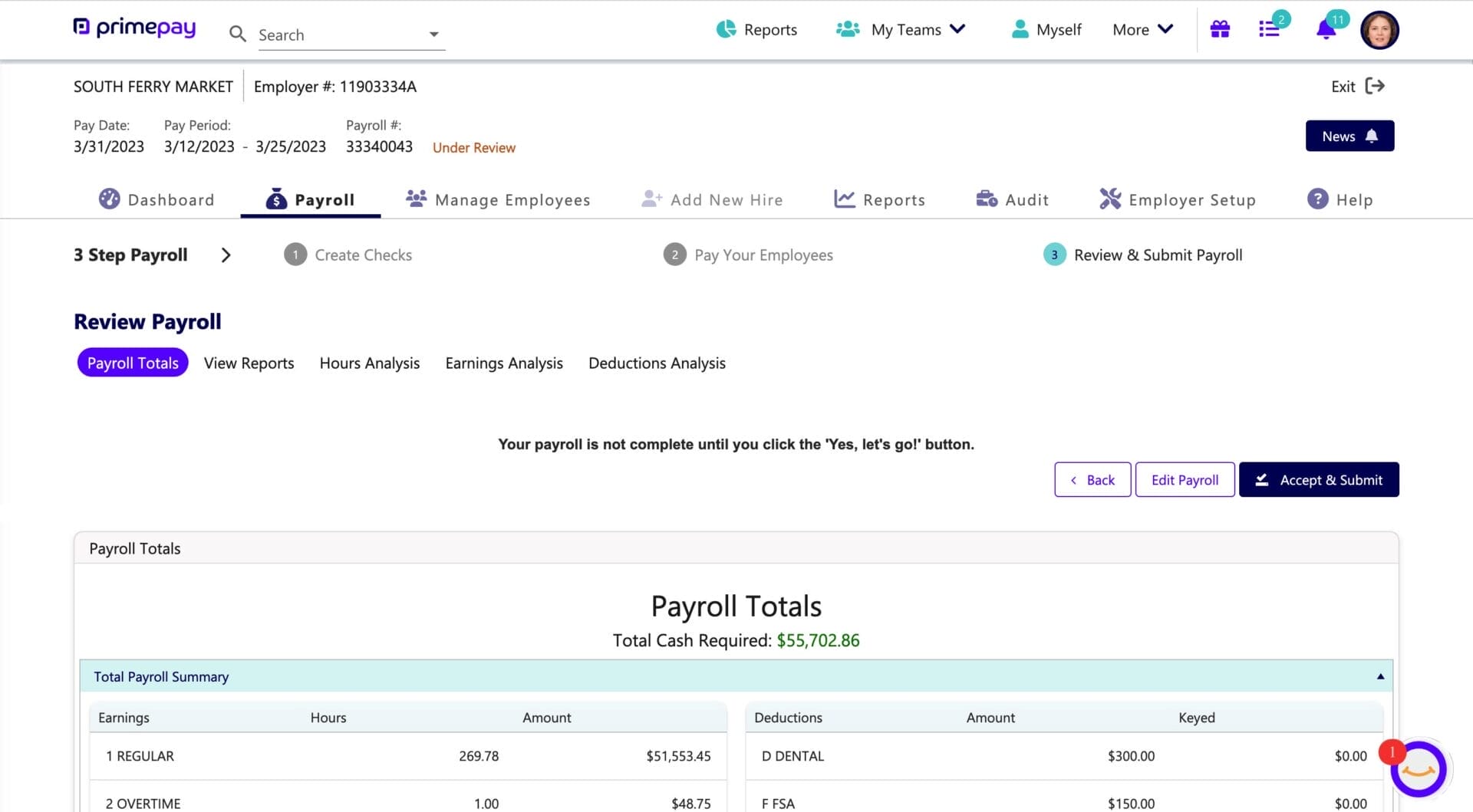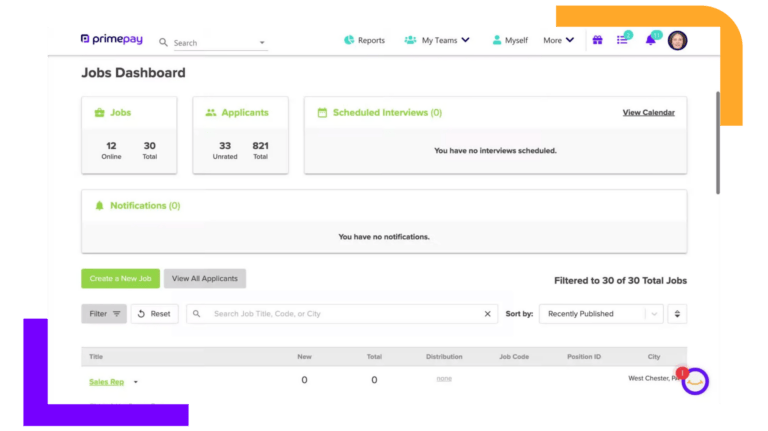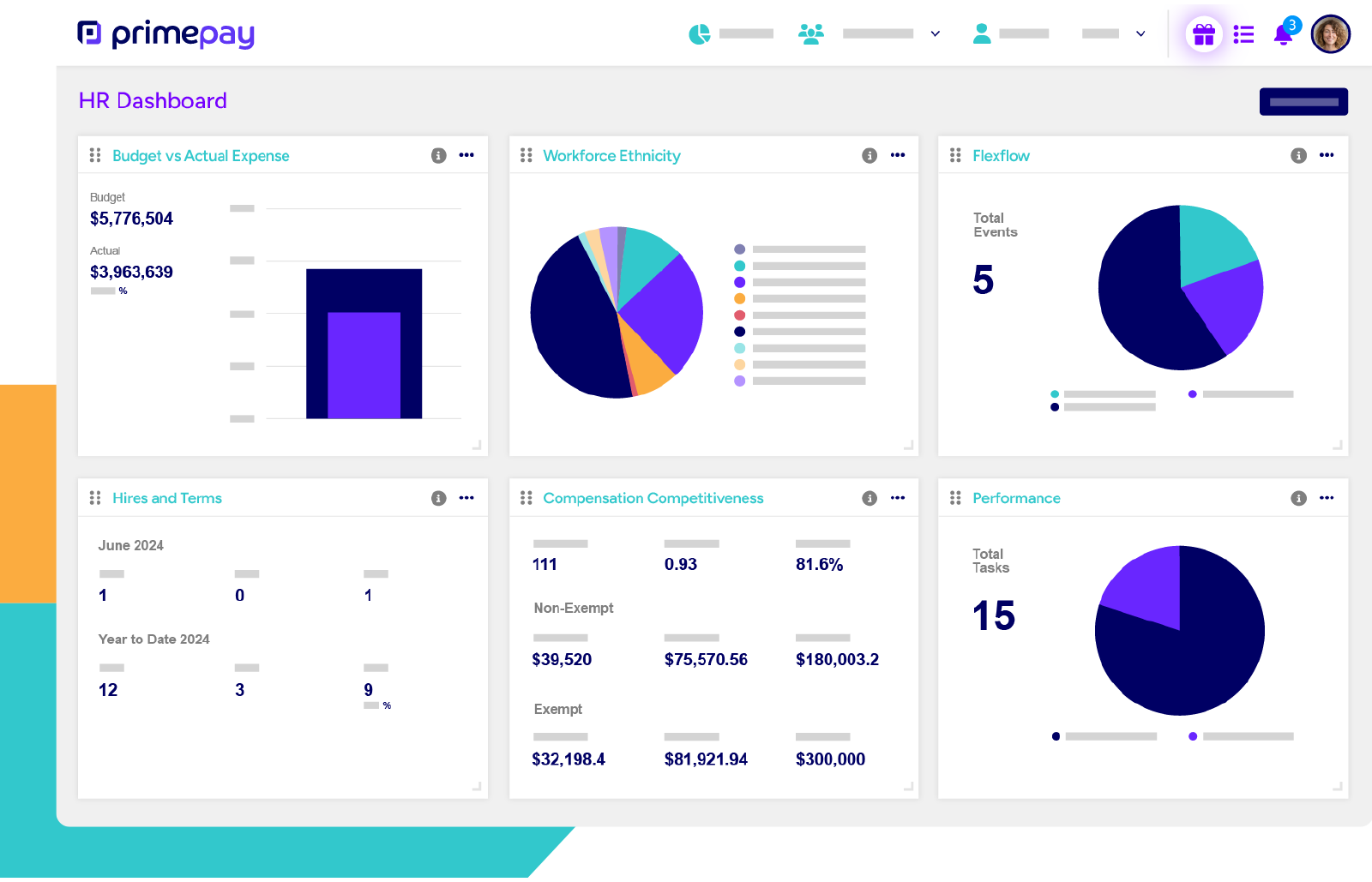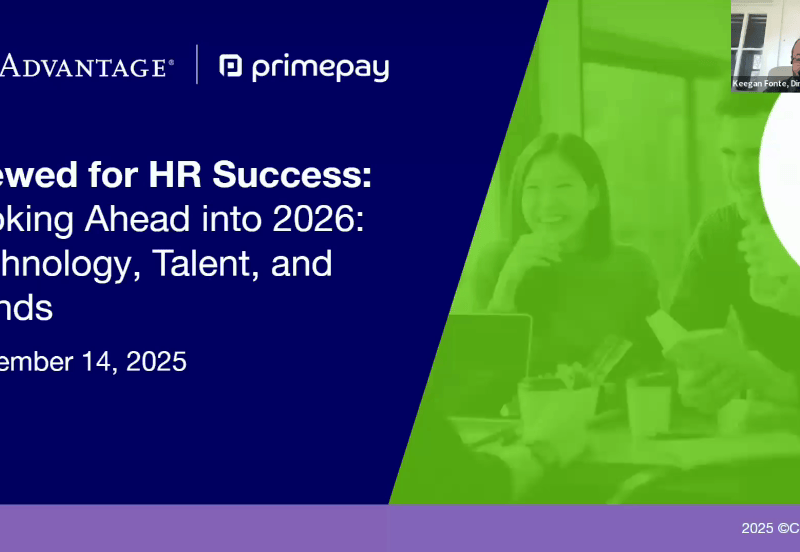There’s a lot of HR systems out there. And while choosing the best HR software for your team may seem daunting, there are some key features that not only benefit HR, but every single employee within your organization.
Typically, deciding on and investing in HR software takes a lot of time and money, especially if you’re only seeking point solutions. Jamie Press, PrimePay’s SVP of Human Resources, recommends that “processes need to be efficient and really easy to meet the needs of the new generation.”
The solution? Investing in an integrated HR system – one that combines HR and payroll – to automate administrative tasks, streamline core HR functions, and tackle payroll and benefits.
Below are seven HR software features that will elevate your HR management, support the entire employee lifecycle, and help consolidate your ever-growing tech stack.
1. Benefits Administration
One of the top necessities within HR software is that of benefits administration. That’s because the advantages of benefits administration are two-fold.
One, HR departments can automate the often-complicated task of enrolling employees in their yearly benefits selection. While automated features reduce administrative burdens and increase efficiency, they also allow HR to spend time reflecting on employee feedback and HR data to create better plans tailored to employee preferences and needs.
Two, benefits administration enhances the employee experience. By providing a self-service selection portal and easy access to documents, employees can make informed decisions regarding their next year’s medical care and benefits.
Therefore, an HR system with benefits administration not only alleviates the HR pain point of organizing employee records and inputting individuals’ benefits information, but also ensures that your people are armed with the information they need to receive the employee benefits they deserve.
2. Payroll
A benefit of choosing an integrated HR system is that your software has HR and payroll functionalities all in one. You’ll therefore have the tools necessary to manage the financial aspect of HR, including accurately tracking expenses, taxes, payouts, and schedules related to employee compensation. (Your CFO will love this, too.) By streamlining payroll processes, the software helps ensure compliance with HR, labor, and payroll regulations, thereby minimizing the risk of errors and costly penalties.
Other benefits of investing in choosing software with payroll features include:
- Tracking and calculating employee wages and benefits. Many HR pain points revolve around finances and benefits, including manually calculating regular and overtime hours, factoring in different pay rates and deductions, and managing PTO balances. By automating these calculations, payroll software eliminates manual errors and saves valuable time for HR professionals.
- Generating and distributing pay stubs and tax forms automatically. Payroll software generates detailed pay stubs that outline the breakdown of employees’ earnings, deductions, and taxes. It also generates tax forms such as W-2s and 1099s, making tax reporting and compliance significantly easier for both organizations and employees.
- Forecasting organizational trends and budget decisions. CFO Mike Myshall believes a forecasting feature within HR software is a game-changer for his role. He explains: “At any point in time, I can get a current snapshot of the total employees in the company, as well as any upcoming future hires and and upcoming terminations. And I can factor those into my forecast on a regular basis. I literally refresh our forecast on a weekly basis to include new hires and terminations who have been impacted over the past week.”
- Staying on top of important payment schedules. You can automatically schedule direct deposits or print physical checks, ensuring that employees are paid accurately and on time. This HR software feature reduces the administrative burden of manual paycheck distributions and promotes employee satisfaction.

When you choose an integrated HR system, you’ll reap the benefits of having both HR and payroll functionalities all in one place.
3. Tax Functionality
Tax functionality is a crucial component of HR software that aids in managing tax-related tasks and compliance requirements. This feature encompasses several essential features such as tax calculations, tax filing, and tax reporting, which are necessary for accurate and efficient payroll processing.
- Tax Calculations: Tax calculations allow HR teams to accurately determine the amount of tax to be withheld from employees’ wages. HR systems with tax features automate this process, taking into account the latest tax laws and regulations. It also ensures that the correct amounts are deducted for federal, state, and local taxes, as well as for other types of deductions such as Social Security and Medicare.
- Tax Forms: Software with tax features simplifies tax filing by generating the necessary tax forms for organizations and employees. It automatically prepares and populates forms such as W-2s and 1099s, reducing the manual effort required for tax reporting. This feature streamlines the tax filing process and ensures compliance with legal requirements.
- Reports: Tax reporting features in HR software provide valuable insights into payroll expenses and tax compliance. HR departments can generate reports that analyze tax withholdings, tax liabilities, and other tax-related data. This capability helps your organization stay informed about its tax obligations, make accurate financial projections, and ensure you meet compliance requirements.
4. Employee Recruitment and Hiring
When choosing HR software, look to solutions that also have recruiting tools. These recruiting tools are a must in today’s environment and help streamline and automate talent acquisition tasks (such as sourcing and screening candidates) for improved efficiency and effectiveness.
Press explains: “The recruiting environment is extremely challenging right now. After 2020, people reconsidered their lives and their dreams, which led to a whole new way to view work. With candidates receiving multiple offers at the same time, if companies aren’t quick and extremely responsive, they won’t win candidates over their competition.”
One key feature of HR software is an Applicant Tracking System (ATS), which allows HR professionals to manage and track candidate applications throughout the hiring process. ATS organizes resumes, screens applications, and stores candidate information in a centralized database. Many systems even allow recruiters to conduct virtual interviews, make job offers, and review hiring reports to make data-driven hiring decisions.
The result? Finding qualified candidates and creating an equitable hiring process for all applicants.

One HR pain point of recruitment is keeping all of your information organized. By investing in software with ATS capabilities, you’ll create a more efficient process and, in turn, develop a stronger candidate experience.
5. Performance Management
If you want engaged employees, one of your best bets is equipping managers with the right tools and training. Why? A study by Gallup found that “70% of the variance in team engagement is determined solely by the manager.”
And while determining best practices and meeting cadences for your managers is crucial, it’s equally important to provide software that stores data so they can manage their direct reports to the best of their ability.
That means choosing a performance management tool that allows managers to assign and track goals easily, provide real-time feedback, and conduct performance reviews. These features not only promote a standardized experience for employees across the organization, but also allow for managers and employees to have access to their performance data so they can continue achieving goals.
Ideally, your software will also have HR data integrations and configurable workflow design. It should seamlessly integrate with existing HR systems to easily transfer data and ensure accuracy. Additionally, configurable workflows enable you to tailor your workforce management process to your specific needs, resulting in a smooth and efficient experience for managers and employees.
6. Learning Portal for Training and Professional Development
You not only want to hire the right talent, but also set them up for success – immediately and for years to come. To do so, you’ll want an efficient onboarding workflow and to offer professional development opportunities.
The data agrees:
- 69% of employees are likely to stay with an organization for at least three years if they had a great onboarding experience.
- Only 12% of people believe their employers’ onboarding was effective.
- Formal onboarding programs can lead to 50% greater employee retention.
- 63% of people who left jobs in 2021 noted a lack of advancement opportunities as a reason.
- 96% of people say it’s important for them to continue developing work-related skills.
While in-person or live trainings are beneficial, it’s also helpful to have an online learning portal to house your onboarding training and advancement courses. HR teams can automate tasks (like acquiring electronic signatures, uploading checklists and questionnaires, and personalizing training portals), and employees can easily navigate this one-stop-shop and keep track of their completed training.
Some HR software take their learning and development portal a step further and offer a space to house licenses and certifications. So beyond completed courses, like quarterly compliance trainings, employees can store their
7. Reporting Capabilities
When comparing features of HR software, always consider reporting abilities. The right HR software will allow your organization to generate data-filled reports to help transform your workforce management. These reports cover different HR functions, including recruitment, employee engagement, performance, diversity, and attendance tracking.
With strong reporting capabilities, you can use your integrated HR system to track analytics, therefore better understanding trends and patterns within your workforce. Press explains, “Examining and cutting up data improves your understanding of trends, such as where the issues are, and helps drive decision-making.”
Some of the analytical features used by HR managers are configurable dashboards, realtime reporting, predictive capabilities, automated data collection, access control, and financial analysis.
It’s important to note that reports aren’t the game changer; it’s what you do with the information that drives change. As Mark Twain said: “Data is like garbage. You better know what you are going to do with it before you collect it.” In other words, running reports to help solve HR pain points will only get you so far if you don’t have a plan. Make sure you have systems and people in place to glean insights from your reports and put a plan in place that will help transform your employee experience.

Your policies shouldn’t only create a positive employee experience; they also need to be backed by data. When analyzing features of HR software, choose a system that has reporting capabilities to give you the insights you need to make the best decisions for your current and future workforce.
Align HR Software Features to Your Organization’s Needs
It’s easy to feel overwhelmed with the numerous options in the HR software space. Before diving into your research journey, first determine your organization’s needs (think HR pain points, future workforce goals, budget restraints). With this information in hand, you can determine if you’d prefer point solutions or benefit from an integrated HR system.
Ultimately, the software you decide upon should align to your company’s needs and benefit not only your HR team, but your entire organization.









